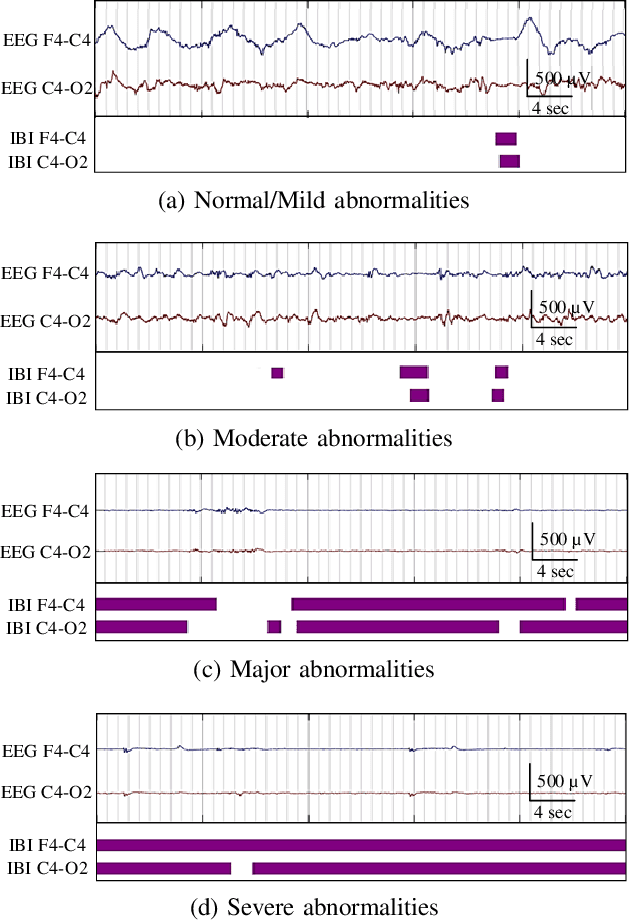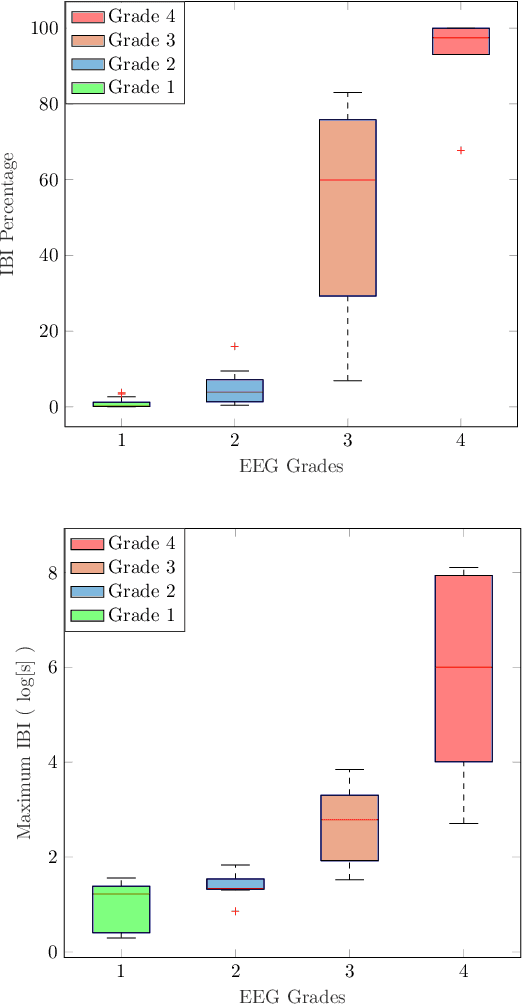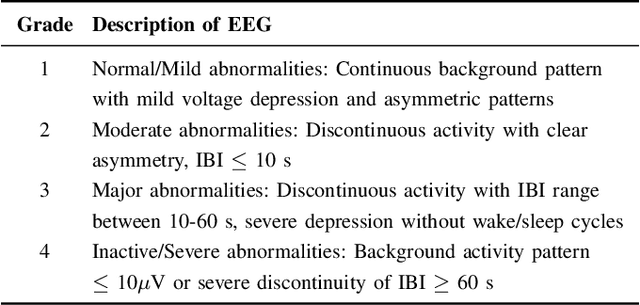Suitability of an inter-burst detection method for grading hypoxic-ischemic encephalopathy in newborn EEG
Paper and Code
Jul 05, 2019



Electroencephalography (EEG) is an important clinical tool for grading injury caused by lack of oxygen or blood to the brain during birth. Characteristics of low-voltage waveforms, known as inter-bursts, are related to different grades of injury. This study assesses the suitability of an existing inter-burst detection method, developed from preterm infants born <30 weeks of gestational age, to detect inter-bursts in term infants. Different features from the temporal organisation of the inter-bursts are combined using a multi-layer perceptron (MLP) machine learning algorithm to classify four grades of injury in the EEG. We find that the best performing feature, percentage of inter-bursts, has an accuracy of 59.3%. Combining this with the maximum duration of inter-bursts in the MLP produces a testing accuracy of 77.8%, with similar performance to existing multi-feature methods. These results validate the use of the preterm detection method in term EEG and show how simple measures of the inter-burst interval can be used to classify different grades of injury.
 Add to Chrome
Add to Chrome Add to Firefox
Add to Firefox Add to Edge
Add to Edge